For today, lots of travelogue and some vintage car sighting.
A curious quirk of traveling while being an admirer of vintage cars is that the hope of finding old metal in a new place is always present in the mind. Traveling to an unexplored and exotic location? Neat. But aside from the views, museums, locations, restaurants and the like, what unexpected old car could show up? In the case of my wife and me, this past March, it was a 1951 Plymouth playing the role of wedding carriage. A sighting of a classic in the colonial and classic city of Antigua Guatemala.
Now, the Plymouth wasn’t all that original, as its rumbling idle indicated a V8 now resided in its engine bay. But all okay in my mind, as the car added to the allure of the place, and well, Antigua, is a city tuned and prepped to work for the 21st century beneath its colonial facade. So, the two classics have kept up with the passing of time in their own way. Survivors, adapting as well as they could to new realities. And both looking mighty classic and traditional while doing so.
We hadn’t visited the city of Antigua since the early 2000s, and the idea of taking another trip to the place had been spinning in our heads for quite some time. Finally, March of this year was the chosen time, just before Easter festivities (huge in Guatemala), and right smack in the middle of the hottest time of the year. Still, the city sits at a lofty 1.5 kilometers (almost 5000 feet) altitude, so the evenings and nights were cool regardless of the fierce midday sun.
While I live and grew up in El Salvador, I have no hesitation in thinking of Guatemala as the prettiest nation in Central America. Politically troubled and unstable, but then again, which one of these nations isn’t? And in regard to its history, landscape variety, ethnic richness and diversity, few of its neighboring nations can compete (aside, well, Mexico). From dense jungles to colonial cities, Mayan enclaves, and even African infused holdovers, just about every single attraction of the region is present.
To this day, the country goes by the “Land of the Eternal Spring” byline, and when looking at its perennial greenery and the mild climate of its cities, one can see that they’re no mere words. As letters from the days of the Conquest show, Spanish Conquistadors were in absolute awe at the richness of life and biodiversity of this landscape, and it’s impossible to go against their feelings when faced with its natural beauty.
Talking about Conquistadors, the city that was our destination was one of their creation. Founded in 1542 in the early days of colonization, Antigua is notoriously flanked by two renowned volcanoes; the Volcán de Fuego and Volcán de Agua – the Fire and Water volcanoes. The Fuego one was actually visible from our room, and it’s technically part of a group of mountains of volcanic origin clumped together. And as travel guides indicate, awfully active to this date; the most in the region. A curious idea, and as I told in a previous post, my trips often oddly coincide with such events…
So, somewhere in the back of my head there was the thought: This one ain’t gonna blow while we’re here, will it?
Meanwhile, Volcán de Agua basically sits in the opposite direction. A colossal thing that could be easily viewed from just about anywhere in town if you looked for it. Unlike Fuego, it’s been inert for eons, though that does not make it necessarily less deadly. Indeed, in 1541 a massive landslide rolled down from the mountain, pretty much wiping out the Spaniard’s settlement of Ciudad Vieja sitting on its skirts.
That tragedy sent the Spaniards looking for a new place to settle; and thus, Antigua Guatemala came to be. Sharp minds may note that Antigua’s new location is only about 6 kilometers away from the previous tragic location, and still awfully near Volcán de Agua. But well, moving a whole town was easier said than done, and Guatemala’s challenging landscape didn’t facilitate matters either, particularly back then. Lastly, volcano surroundings were usually easier to colonize for the Spaniards, as natives didn’t have an interest in fighting for them. (Those natives knew those mountains well, after all.)
While appearing modest in size today, Antigua became the region’s main city during colonial times. A capital of sorts for what was then known as the Capitania General de Guatemala (Comprising then what today are Guatemala, Honduras, El Salvador, Nicaragua and Costa Rica). It was the political, cultural and administrative center of the region, and like a good Spanish colony, religion was among its main activities. Something one easily realizes to this day, as convents, churches and the like show up in healthy numbers throughout the city. All quite in keeping with the colonizers’ origin, as many old city centers in Spain also enjoy countless such religious structures.
Antigua nowadays is mostly a tourist enclave, product of its well preserved colonial streets and structures. A rarity in this region obsessed with modernity, with cities often covered with endless blocks of sprawling grey-concrete housing.
However, it’s not like Antigua’s traditional looks were the result of conscious preservation, but rather an accident. Or tragedy, more precisely. A major earthquake in 1773 left a good deal of the city in ruins, which sent local authorities, once again, looking for yet another settlement; today’s Guatemala City. Meanwhile, Antigua floundered for a while as church and state representatives left for the new location, though it was never completely abandoned.
As time went by, the city regained a certain degree of activity, but mostly, its colonial layout and old style beauty became a rare attraction in the Americas. A fame that’s grown over time, and nowadays, depending on the time of the year, the city’s streets are flooded with tourists and visitors. At peak, it can be quite overwhelming. Knowing this, our chosen time for the visit coincided with slow tourist season in the city; February for sure, and sometimes March, depending on the Holy Week calendar.
We did time that well. As expected, we got quiet and mellow streets to walk and shoot at ease. My tourist-mode ideal.
Unlike other visits to Guatemala, this time we traveled by bus (You would have to strong-arm me to make me drive through Guatemala City), which made that part of the trip fairly uneventful. On arrival, we discovered that our hotel was a block away from Antigua’s Arch of Santa Catalina, one of the town’s better known sights. Originally, a bridge between two convents, later closed and eventually adorned with a prominent clock of French origin. It’s one of the town’s most active areas, filled with street vendors, plus shops and restaurants aimed to the tourist trade.
After a night’s rest, we were ready to take to the city’s streets and quite eager to check out the attractions, restaurants, and just see how Antigua had changed since our last visit. Yet, despite all those expectations, as I mentioned earlier, the thought of finding a nice curbside classic was never far from my mind: Yes, all these ruins and beautiful sights are nice, but what about old cars?
On that line of thinking, I soon discovered that local ice cream carts were often shaped and decorated in automotive themes. Not quite responding to my vintage car longings, but fun nonetheless.
The ice cream carts were found all throughout the town, but mainly around the city’s main square. Just as I was finishing taking shots at the truck-ice-cream-cart, a Pontiac Solstice drove through and was quite an attention grabber; the car looked positively exotic in that setting.
The Solstice’s driver seemed like an upperclass young man hanging with his girlfriend, ready to enjoy Antigua’s nightlife. About which, there’s plenty, and it’s a source of weekend fun for moneyed visitors coming from Guatemala City.
One could argue that history is the main reason to visit Antigua, particularly if one is interested in such matters. To me, I knew Antigua was the political origin of the region, and much of what we endure and enjoy nowadays, from San Salvador to more distant Costa Rica, is related to events dating back to this city at the center.
A good deal of that history, as I said, is religious. One doesn’t need to walk far to come across a church or convent, abandoned or rehabilitated, belonging to one of the many Catholic denominations that ruled this city then.
Entrance to these sights is generally available, and quite cost accessible. Museography, as knowing what you’re looking at, isn’t that great, so any accompanying guidebook with some info on these sights is a good idea.
First on our visit were the Santa Teresa and Capuchina Convents, partially in ruins, though both nicely rehabilitated. Their empty and color-free hallways brought a somewhat eerie, serene feel to the place, with the nicely scattered Bougainvilleas reminding you that we were in the tropics (and not some Gregorian Chant CD booklet).
To anyone with a passing interest in architecture, the classical styling of these religious structures should be familiar, taking mostly southern European principles into practice. One notorious difference: Their overtly thick columns and walls, built as such to withstand the frequent earthquakes of the region. A Palladio on steroids kind of aesthetic.
With the buildings being free of their former inhabitants and livelihood items, the large structures form a kind of curious maze that’s fun (and slightly unreal) to go through. From underground storage areas, to temple hallways, naves and domes; a variety of spaces to go through and explore.
The Capuchinas Convent was the most maze-like of them all, with a variety of unsuspected areas, narrow corridors, countless hallways and a few temples. Most peculiar of them, the nun’s former quarters, a circular structure for spiritual retreat with 18 cubicles built for the task. A unique structure then in the Americas, and that some refer to as the continent’s first apartment-like facilities. A bit of a stretch in my opinion, though the nuns did have a space to devote to their retreat in complete isolation. One structure is fully reconditioned (on the right, with a barely visible gate), and as can be imagined, it was a modest and confined affair.
We then moved to the town’s former Cathedral, which as can be seen, got seriously damaged back in 1773.
Now, one drawback of our modern accomplishments is that it’s difficult to imagine the awe these structures caused in a pre-industrial world. Still, the heights of what remains do a good job of sending one back through time, as they still create some wonder. One can only imagine what effect these caused on the humble inhabitants who surrounded this city during the colonial era.
Curiously, there’s one structure that still survives nearly intact in the city’s center. Fairly undamaged and still standing pretty much as it did back in colonial days, it’s the University of San Carlos’ building, the one and only such college in the region back then. While the college had resided in this location since 1676, the structure dates to 1758, and as can be seen, possessing a Spanish Gothic kind of architecture, peppered with the Islamic motifs Iberian architecture was known for.
The University of San Carlos still exists to this day, though located in new facilities. As for the old building, a museum on Colonial art now sits in its interior. But don’t worry, I won’t bore you with endless photos of Catholic altars and Via Crucis scenes in stained glass. Not because I don’t want to, but because the museum was closing by the time we arrived. Oh well, something to do in our next visit…
While Holy Week was about a month away when we arrived, Guatemala is a very Catholic nation and daily activities for the occasion were already taking place. By nighttime, Antigua’s “new” Cathedral (built on a lot in front of the former’s facade) was specially lit, mass was taking place, and a modest brass band played somber music at the entrance. It was all quite new and oddly attractive, as we, city dwellers in frantic San Salvador, are far too modern to pay much time to such rituals. After enjoying the reverent spirit of those proceedings, we decided to close activities for the day.
Vintage car time finally arrived late the next morning (Which, in all honesty, is the only kind of mornings I ever have). After a hearty breakfast, and close to noon, I caught a glimpse of the car from a distance and approached as quickly as I could (not easy, under that sun). A 1950s Plymouth! From the then dowdy Chrysler styling of the era, though imbued with the practical qualities their buyers truly cherished.
Wanted something flashy and trendy back in those 1950s days? Your Chrysler-DeSoto-Dodge-Plymouth fellas had these instead, bucking GM’s trendy low-wide mantra of the time. Cars to sit in with a hat on, as per express request of then company president, K.T. Keller; efficient packaging over all else, a then known Chrysler attribute. Who wants to be a fashion victim, after all?
Turns out, just about everyone, as Chrysler’s sales dropped dangerously quick in the cut-throat American automotive market of the 1950s. By the late ’40s, Chrysler was the world’s number two carmaker per volume; by the mid-50s, it had receded to third after a resurging Ford and dropping. A fall from which, one could argue, the carmaker never truly recovered.
But why get into that right now? We’re looking at this survivor, which attests to other qualities the company excelled at. From better packaging and handling to above-average assembly for the era, with many of these early ’50s Chrysler products lasting well into the 1960s. And sometimes, into the 21st Century, as can be seen.
Further pragmatic/conservative thinking can be seen in this shot, with the Plymouth’s separate rear fenders taking center stage. An idea that was falling out of fashion, but the company felt it helped with body repairs when damaged.
Now, let’s leave US matters aside for a moment. When it comes to Central America, Plymouth (as I’ve previously told), had a reasonably relevant presence and didn’t suffer against the likes of Ford or Chevrolet; for all purposes, it was an equal, or even superior offering. From the 1940s to the 1960s, one of the most prominent American makes in the region.
A local fame that may have been gained after a trio of Americans crossed the region in the early 1940s, in what was part of a grueling drive that was to go from Alaska to Cape Horn. A drive done, appropriately, on a ’41 Plymouth, and succeeding on its mission (above, in Southern Mexico).
Nothing that grueling awaited today’s subject, mind you, as the car now serves mostly as a wedding carriage. Something, which I later discovered, was kind of a fad in Antigua (a ’54 Pontiac would be another couple’s ride the next day).
Regrettably, I learned little about the car other than its obvious qualities and situation (its model year and wedding car duties), as the driver was of little help when I approached him:
- What year and model is it?
- It’s ’56!
Ok, one curious ’56 Plymouth if that were the case… Or rather, the driver was to be of no use in regards of this survivor’s back story.
So, I could only guess. With its missing trim, hard to tell what exact model it was, other than it being a 4-door. There was also the engine’s rumble, which made clear the original inline-6 was long gone.
And those modern adaptations also seem to include a more recent automatic. So a whole drivetrain update.
Yet, in its role as a wedding car, the Plymouth looked quite fitting and served just as originally intended. See how some of those modern CUVs look close to this old Plymouth’s height? Neither bride nor groom has to hunch over to reach these seats in an unceremonious manner. Even with a hat on. Should you need a vintage car for a wedding, an old Plymouth is probably the right car to choose. Or a Chrysler limo of the same period, if one was worried about entry-level make connotations.
Car sighting done, we got back to our city touring. Having had enough of the city’s ruins, it was time for some shopping and feasting. Antigua, like most of Guatemala, is filled with street vendors of Mayan descent still wearing and selling their colorful wares. It’s impossible to go far in the nation without coming across such scenes. To our modern eyes, all these colors and stimuli border on overload. But better get used to it, as Guatemala is filled with such displays.
And yes, color will be found even while cleaning yourself. (And if you wonder, the rest of the bathroom was just as colorful.)
Unsurprisingly, the city was full of colorful and playful trinkets and mementos; an endless stream to choose from. Not that we bought a whole lot. I love the place, but I also like a good deal. And like all good tourist attractions, Antigua’s goods are generally priced accordingly (i.e., needlessly costly, or for “suckers” as my wife put it, in rather colorful language).
It was during this afternoon stroll that we came across our second vintage car that afternoon, a mid-’70s Datsun 120Y (Sunny) wagon. A find that placed my “car mind” at ease. After all, Central America is ground zero for old Japanese cars, and had I found none, I was going to feel something going seriously wrong with the order of the universe.
Being March, the afternoon heat was stifling. Luckily, we reached the town’s former open laundry-washing facilities, where locals cleaned their garments back in colonial days. No idea if any current inhabitants still do such a thing at the place, but during our stop at the place, we got to cool off and view it in a fountain-like kind of function. And with the palm trees surrounding its plaza, it made for a rather pleasant stopover.
All trips come to an end, and so did ours. After some coffee and pastries, we waited for the sun to come down a little before we headed back to our hotel. By then, and taking the shaded side of the street, the return was more than manageable in the city’s quiet streets.
Back at the hotel, after a couple of days of travel and sightseeing, we decided to spend a quiet evening. We parted the next day before noon, with all according to plan. Then, as we rode on the bus back to San Salvador, and just a few hours after we left, Volcán de Fuego had one of its notorious blow ups, with several nearby towns being placed on high alert; the most affected taken to temporary shelters.
We missed all that, however. So, close, but no (volcanically lit) cigar.
Not that such events will keep me from visiting the city or Guatemala in the future. Beautiful landscapes, colorful sights, a good deal of history, and now even old car sightings. What’s not to like?
Related CC reading:
Curbside Classic: 1951 Plymouth Cranbrook – Automotive Immortality
Cohort Classic: 1950 Plymouth All-Steel Wagon – The First Modern Station Wagon










































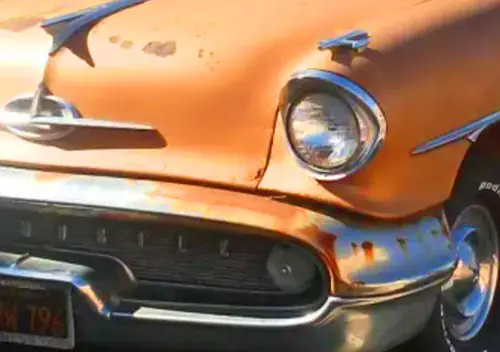
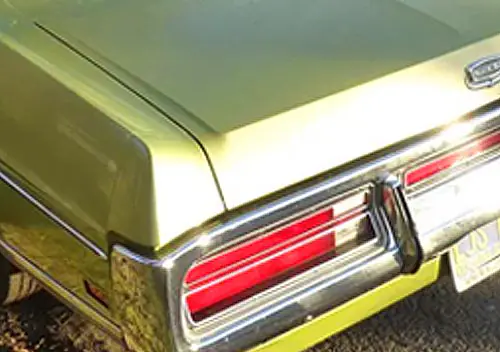



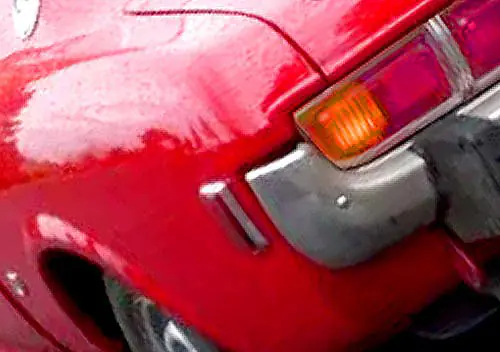

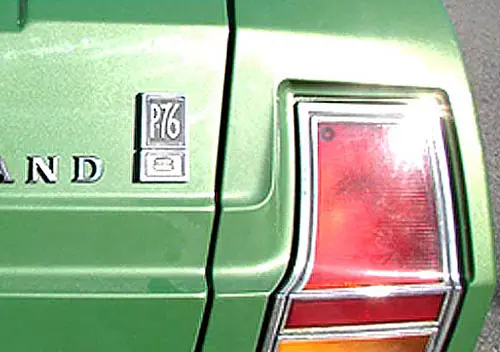
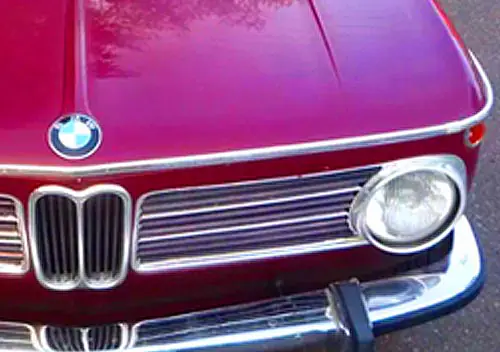


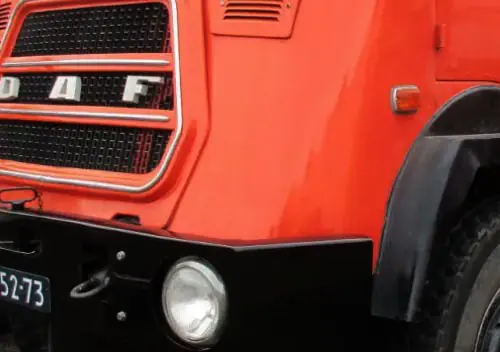
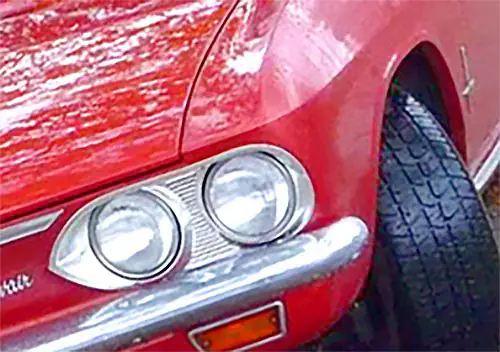
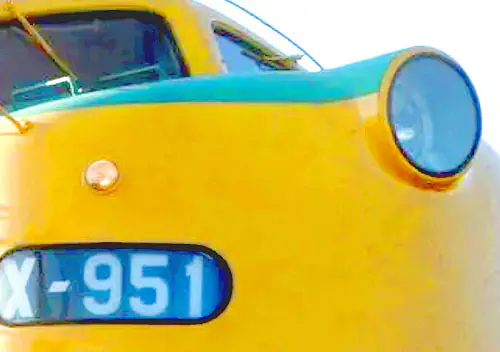
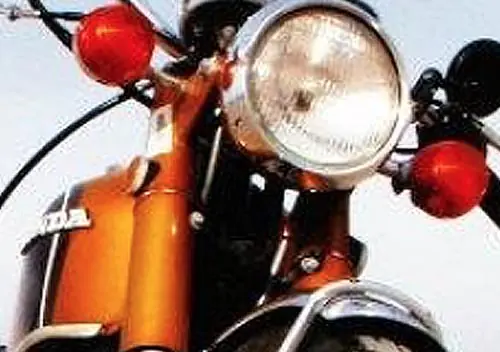


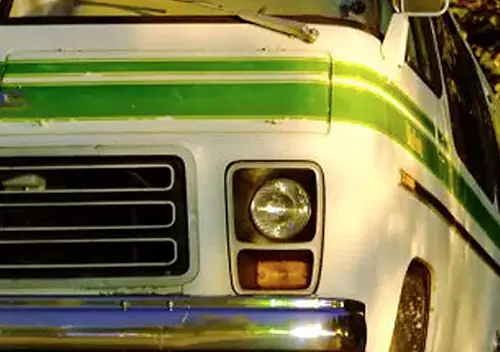

Great travelogue Rich…. Makes me want to visit the place.
And all this time I thought Guatemalan Antigua was just a coffee (that I really like, BTW, although I’m currently drinking some Costa Rican Peaberry 😉)…
The fact that ‘51 Plymouth was called a ‘56 model by its driver may not have been that far off…. As I recall from reading as a kid, as well as on these pages, didn’t our American tooling come south to that region when we moved onto newer models?
I remember reading an article here that a North American ‘67 Ford LTD was built in Brazil as a 1980 model if I am remembering this correctly.
That was an unexpected treat this morning; thanks for taking me along.Have long wanted to see Central America, and this only whets the appetite. Love all the bright colors, the natural scenery and the historical architecture. And the food too, I’m sure.
I truly believe I have never set eyes on a picture of that 2-door wagon style of Datsun 120Y. What a charming little oddity, and it looks right at home with its bright red paint job and extravagant design.
From the no clock instrument panel it looks like a Plymouth Cambridge. Interesting that it still has the factory radio, but doesn’t appear to have a heater. Maybe not surprising if originally sold in Central America.
I know that heaters were still optional in many American cars into the sixties, but I don’t recall ever seeing a heaterless car.
Stunning visuals. Beautiful work! The character and charm is so genuine.
I recall reading about the impressive journey of the ’41 Plymouth, as a kid.
Thank you for this travelogue – I’d never heard of Antigua Guatemala before, so this was all quite interesting.
I love the Plymouth, and also the idea of using a classic, entry-level vehicle like this as a wedding chariot. It’s my kind of thing. I did find the wedding-car company’s website (www.deltamotorsgt.com), and the car is labeled as a 1951 Plymouth, so maybe the driver just wasn’t into details like the precise model year. A wedding-day glamour shot from the company is below.
Very enjoyable meander, sir.
For all the howdy-dowdies thrown at Chrysler stuff of the era, I think time has been kind. And I doubt a modern eye would much distinguish it from contemporaries.
I am good with the 49-50 Plymouth, but the frowny-face grille on the 51-52 was the sorriest update for those 2 years of any of Chrysler’s Divisions.
I loved the tour. The landscape and the old architecture are both beautiful. It’s a shame about the volcano.
My mom/dad’s car from “51-55/6 ish”. Their’s was apparently green inside.
Bought it just before being stationed in “Germany”.
The military shipped it there/back.
Great post. Antigua is beautiful. My brother lives about 20 minutes outside of town and has a great view of Fuego from his living room. It sends up little puffs every night but every so often there’s something slightly more dramatic…
I’ve been to Antigua…for a wedding. That was in 1998 or 1999 and featured as best as I can recall buses, vans, and Jeeps, but unfortunately no 1951 Plymouths. It was a magical place though what with the colonial architecture and the volcanoes. Great write-up and photos!
Thank you for this great article with many pictures .
I have many fond memories of living in Guatemala in the mid 1970’s, my father in law was a master carpenter who was building a nice house for a lawyer, he’d ride his Yamaha twin 100C.C. back to the capital where we lived every Sunday, a few times I rode my 1937 Harley-Davidson “KnuckleHead” 61′ to visit him during the week .
Back then old dilapidated American cars were everywhere, I found a dent and rust free 1954 Chevy convertible but my ex wife flat refused to let me buy it, hence the ’37 Harley, I didn’t ask, I just came home with it =8-) .
-Nate
Such an interesting tour of a fascinating part of the world that we’ve never visited but would love to, thanks Rich! After our move to Denver in a year or so it will be a bit more accessible and we hope we can do so then.
As for early ’50s Plymouths, boring but excellent cars, no surprise that many have survived.
Entertaining and educational post. Loved it. Thanks, Rich.